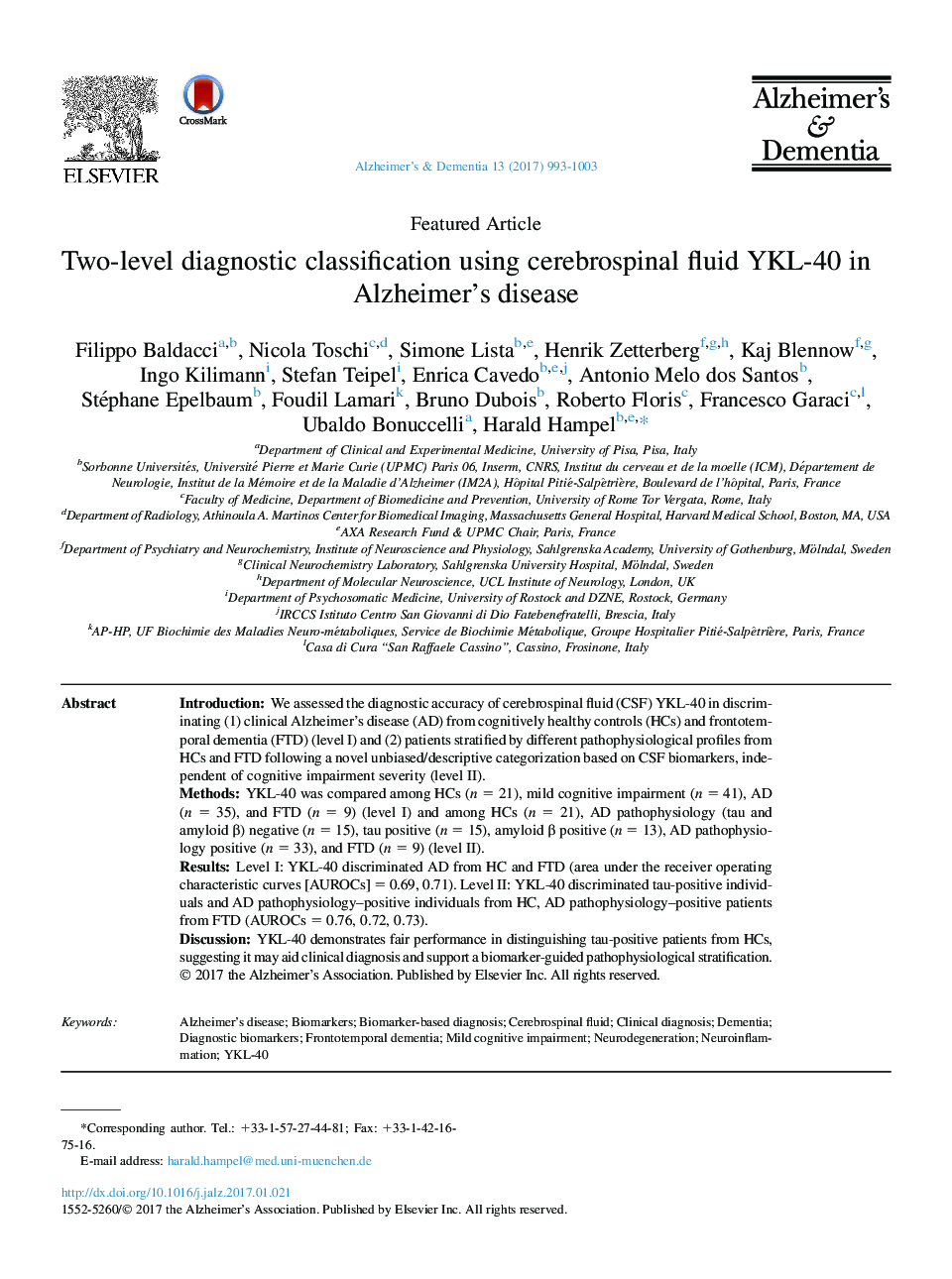| Article ID | Journal | Published Year | Pages | File Type |
|---|---|---|---|---|
| 5622792 | Alzheimer's & Dementia | 2017 | 11 Pages |
â¢We introduced the innovative “A/T/N” scheme for stratifying Alzheimer's disease (AD) patients.â¢We performed both clinical- and clinical/biomarker-based categorizations.â¢YKL-40 fairly discriminated AD from healthy controls and frontotemporal dementia.â¢YKL-40 fairly discriminated t-tau pathology positive patients from healthy controls.â¢YKL-40 is a pathophysiological marker of neuroinflammation.
IntroductionWe assessed the diagnostic accuracy of cerebrospinal fluid (CSF) YKL-40 in discriminating (1) clinical Alzheimer's disease (AD) from cognitively healthy controls (HCs) and frontotemporal dementia (FTD) (level I) and (2) patients stratified by different pathophysiological profiles from HCs and FTD following a novel unbiased/descriptive categorization based on CSF biomarkers, independent of cognitive impairment severity (level II).MethodsYKL-40 was compared among HCs (n = 21), mild cognitive impairment (n = 41), AD (n = 35), and FTD (n = 9) (level I) and among HCs (n = 21), AD pathophysiology (tau and amyloid β) negative (n = 15), tau positive (n = 15), amyloid β positive (n = 13), AD pathophysiology positive (n = 33), and FTD (n = 9) (level II).ResultsLevel I: YKL-40 discriminated AD from HC and FTD (area under the receiver operating characteristic curves [AUROCs] = 0.69, 0.71). Level II: YKL-40 discriminated tau-positive individuals and AD pathophysiology-positive individuals from HC, AD pathophysiology-positive patients from FTD (AUROCs = 0.76, 0.72, 0.73).DiscussionYKL-40 demonstrates fair performance in distinguishing tau-positive patients from HCs, suggesting it may aid clinical diagnosis and support a biomarker-guided pathophysiological stratification.
